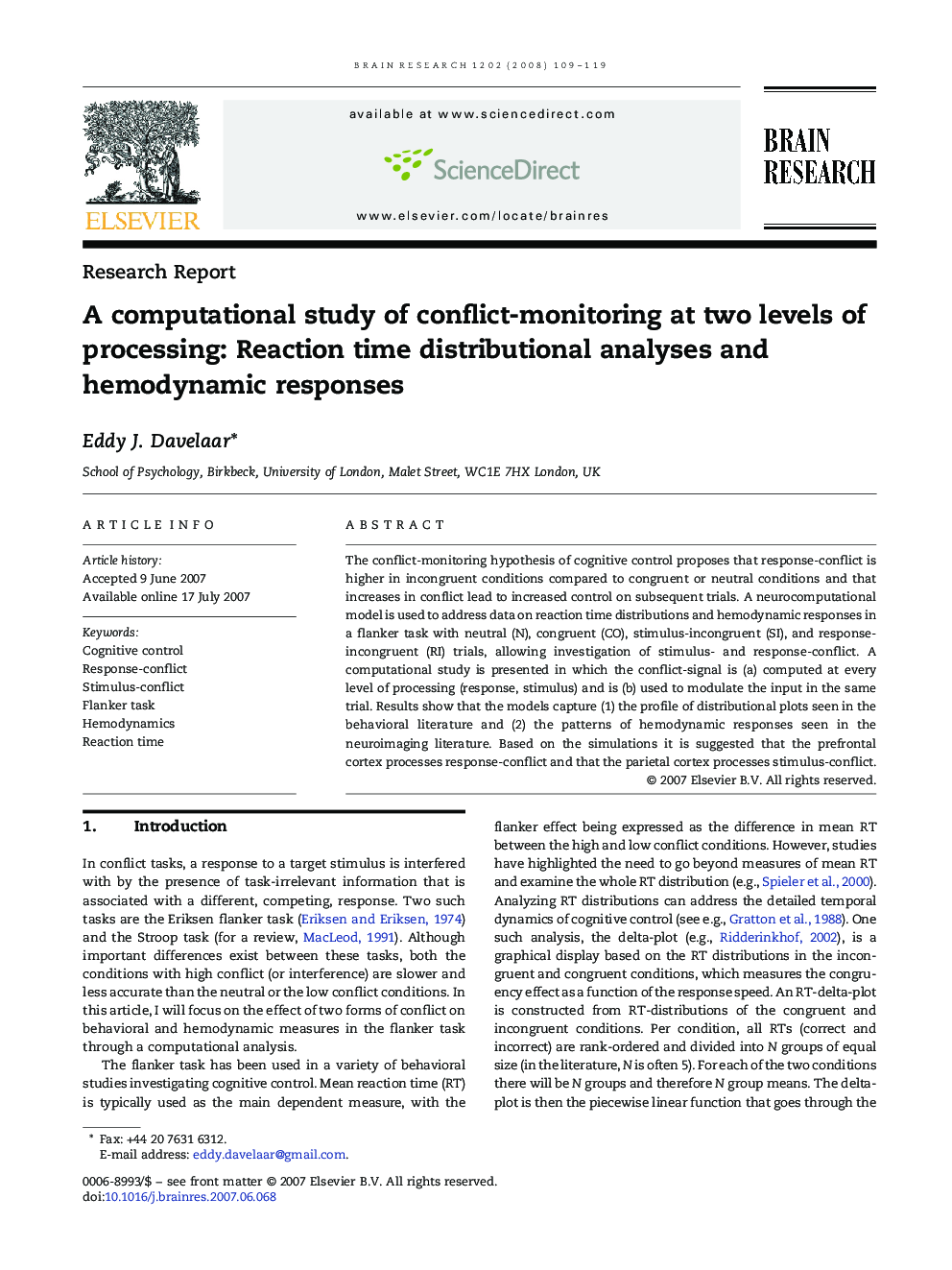| کد مقاله | کد نشریه | سال انتشار | مقاله انگلیسی | نسخه تمام متن |
|---|---|---|---|---|
| 4329861 | 1614237 | 2008 | 11 صفحه PDF | دانلود رایگان |

The conflict-monitoring hypothesis of cognitive control proposes that response-conflict is higher in incongruent conditions compared to congruent or neutral conditions and that increases in conflict lead to increased control on subsequent trials. A neurocomputational model is used to address data on reaction time distributions and hemodynamic responses in a flanker task with neutral (N), congruent (CO), stimulus-incongruent (SI), and response-incongruent (RI) trials, allowing investigation of stimulus- and response-conflict. A computational study is presented in which the conflict-signal is (a) computed at every level of processing (response, stimulus) and is (b) used to modulate the input in the same trial. Results show that the models capture (1) the profile of distributional plots seen in the behavioral literature and (2) the patterns of hemodynamic responses seen in the neuroimaging literature. Based on the simulations it is suggested that the prefrontal cortex processes response-conflict and that the parietal cortex processes stimulus-conflict.
Journal: Brain Research - Volume 1202, 2 April 2008, Pages 109–119